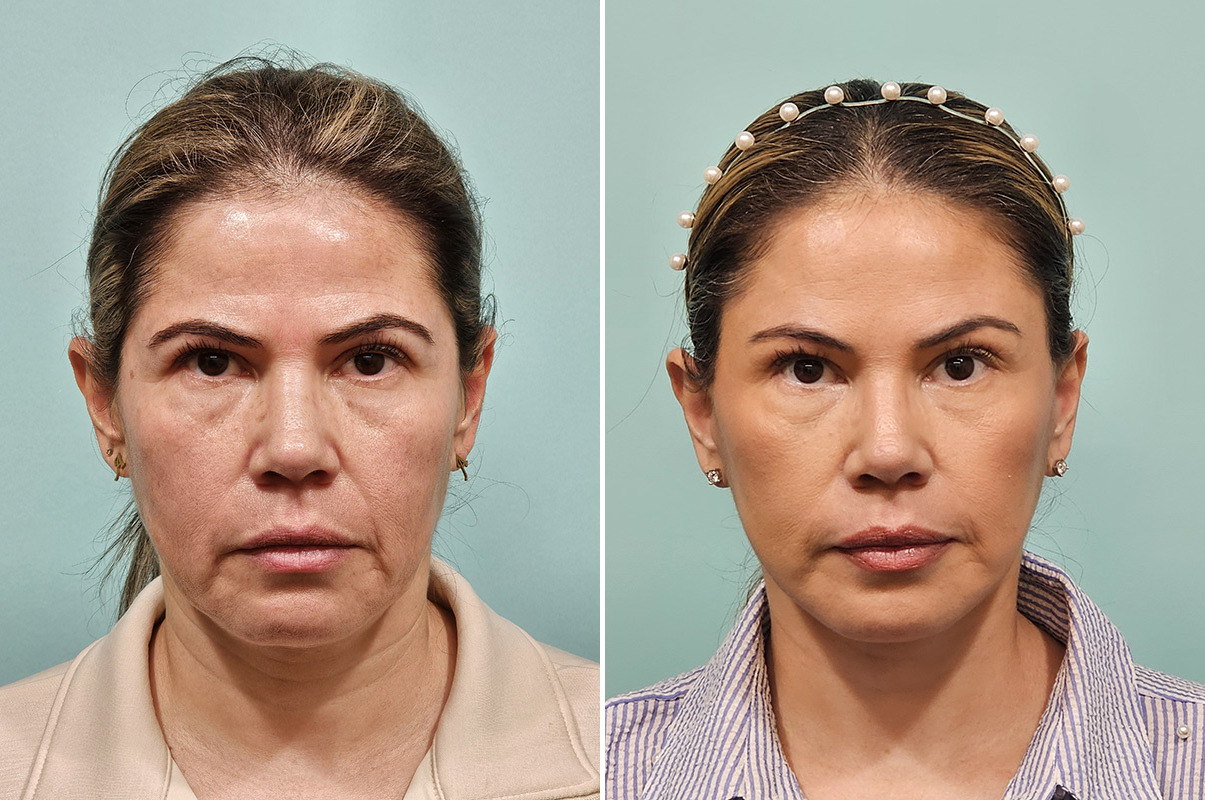Looking for a “facelift after 10 years” reality check? What if you could see how time, lifestyle, and technique shape your results a decade later? In this guide, we’ll unpack what holds up, what changes, and the smart moves that help you keep a rejuvenated appearance after cosmetic surgery.
Ready for honest insights and practical tips you can actually use? We’ll walk through longevity, maintenance, and modern options—so your face looks refreshed while still looking like you. Let’s dive into what a facelift looks like after 10 years and how to preserve that youthful appearance with confidence.

What Does a Facelift Look Like After 10 Years?
Most patients still look noticeably younger than if they had never had surgery, even a decade later. A facelift repositions lax tissues and reduces wrinkles and jowling, but it doesn’t stop aging. Over 10 years, gravity and volume changes continue; however, the youthful appearance created by the lift generally endures, leaving you looking “better than baseline.”
In general, results from contemporary facelifts can look good for many years—often approaching a decade or more—depending on skin quality, surgical technique, and lifestyle. Think of it as turning back the clock: time keeps moving, but you continue to age from a younger point.
What Affects the Longevity of a Facelift Surgery?
Longevity isn’t a fixed number; it’s the sum of biology, choices, and craftsmanship. A facelift resets the clock on facial aging, but the new “starting point” will be shaped by your skin, habits, and the surgeon’s approach. Understanding these variables helps you make decisions that compound results and reduce the effects of time.
Patient-Specific Factors. Your age at surgery influences baseline laxity and healing potential; younger tissues often hold tension longer. Skin quality and elasticity—impacted by collagen density, prior sun exposure, and hormonal shifts—determine how well tissues drape and redrape. Genetics set the pace and pattern of facial aging, including where you sag first and how you scar. Together, these traits define the ceiling for durability and guide realistic expectations about what your personal timeline might look like a decade later.
Lifestyle Factors. Daily habits either protect or erode your gains. Ultraviolet effects from sun exposure accelerate collagen breakdown and pigment change; smoking constricts blood flow, compromising skin and deeper support. Diet quality, hydration, and weight stability preserve contour; frequent weight fluctuations can blur jawline definition. A disciplined skincare routine—cleansing, antioxidants, retinoids, and sunscreen—helps defend against environmental aging. Sleep, stress control, and alcohol moderation further support vascular health and dermal renewal, collectively extending how long your result looks crisp and refined.
Surgical Factors. Technique and execution are pivotal. A full facelift addresses broader laxity; a mini facelift offers subtler, shorter-scar improvement for early jowling; a deep plane facelift repositions deeper facial layers for powerful, natural longevity. Vector planning, SMAS/platysma management, and neck integration matter. Equally critical is the surgeon’s judgment—tailoring the lift to your anatomy, balancing skin redraping with structural support, and protecting blood supply. Craftsmanship minimizes tension and preserves volume, two variables strongly tied to how results age over time.
Post-Operative Factors. Results continue to evolve beyond the operating room. Strict adherence to aftercare—incision care, swelling control, activity pacing—optimizes healing and scarring. Long-term maintenance amplifies durability: medical-grade skincare, routine sunscreen, and strategic non-surgical maintenance like neuromodulators, collagen stimulators, and energy devices can offset the effects of ongoing aging. Healthy sleep, hydration, and weight stability keep contours sharp. Regular follow-ups allow early tweaks, helping your outcomes look intentional—not just good on day 90, but still polished at year ten.
Will I Need a Secondary Facelift After a Decade?
It really depends. If your initial facelift was performed at a younger age, when tissues were more resilient, or if you maintain a healthy lifestyle and consistent sleep schedule, you may not need a second facelift for many years. Many patients still look refreshed a decade later without needing another surgery.
However, aging is dynamic, and changes outside the reach of a lift can arise. For example, loose skin under the chin may call for a neck lift, or more subtle fine lines could respond beautifully to Botox. Sometimes, a carefully timed second procedure or combining with other facial rejuvenation procedures offers the best path forward. The right strategy balances your goals with the least invasive intervention necessary.
Facelift Patient Results


* Each patient is unique and individual results may vary.
What Can I Do to Extend My Facelift Results?
As a patient, extending the life of your facelift means committing to thoughtful habits long after the operating room. Every cosmetic procedure has limits, but how you treat your skin, body, and lifestyle can significantly influence durability. By prioritizing health, protection, and daily care, you set the stage for results that continue to look refined and refreshed for years.
Ensure a smooth recovery time
Your facelift’s longevity starts in the first few weeks. Following post-op instructions, resting adequately, and avoiding strenuous activities give tissues the stability they need to heal well. Keeping swelling and bruising under control protects incision sites and helps scars fade smoothly. A calm, well-managed recovery period lays the foundation for lasting results and minimizes complications that could shorten the lifespan of your facelift outcome.
Get sufficient sleep
Quality sleep is one of the most underrated beauty tools. During deep rest, your body repairs tissues, balances hormones, and boosts collagen production—all essential for maintaining facelift results. Poor sleep, on the other hand, accelerates fatigue-related aging signs like dull skin and puffiness. Prioritizing 7–9 hours nightly not only supports healing in the early months but also protects your refreshed contours for years afterward.
Have a healthy diet
Nourishing your body with balanced meals pays dividends for your skin and overall healing. A diet rich in lean proteins, colorful fruits and vegetables, and omega-3 fatty acids supports collagen production and keeps inflammation in check. Avoiding excess sugar and processed foods prevents oxidative stress that can dull your complexion. By fueling your body properly, you help maintain vibrant skin tone and firm contours, allowing your facelift results to remain sharp and youthful much longer.
Stay hydrated
Hydration is key to keeping skin resilient and radiant. Drinking enough water each day supports circulation, nutrient delivery, and collagen health—all of which reinforce facelift results. Dehydrated skin can look dull, accentuating fine lines and reducing elasticity. By making hydration a daily priority, you maintain supple skin texture and sharper contours, helping your refreshed look last longer and look more natural over time.
Quit smoking
Tobacco use is one of the fastest ways to undermine facelift results. Smoking constricts blood vessels, reducing oxygen and nutrient delivery that are critical for skin healing and long-term vitality. Over time, it accelerates wrinkles, dulls complexion, and weakens collagen support. Quitting before and after surgery not only enhances recovery but also extends the smooth, youthful look of your lift for many years.
Regular skincare routine
Consistency keeps results looking polished. Cleanse gently, then layer antioxidants (vitamin C/E), peptides, and nightly retinoids to boost collagen turnover and even tone. Daily SPF 30+ is non‑negotiable to defend against UV-driven laxity and discoloration. Add periodic exfoliation to smooth texture without irritating healing skin. Medical-grade products, tailored by your provider, amplify quality and predictability. A disciplined routine won’t replace surgery, but it reinforces firmness and clarity—helping your lift read as naturally youthful rather than temporarily tight.
Reduce Alcohol Intake
Alcohol can dehydrate the skin and weaken collagen, both of which shorten the lifespan of facelift results. Excessive drinking also increases inflammation and slows healing, creating a less vibrant complexion over time. Moderation is key—limiting alcohol helps maintain hydration, elasticity, and overall skin quality. By reducing intake, you give your face the best chance to hold onto its youthful contours and glow long after surgery.
Consider topical treatments
The right topical care can reinforce surgical results by keeping skin healthy and resilient. Products like silicone gel sheets can minimize scar visibility, while a vitamin E ointment may soothe and soften healing areas. Dermatologist-approved retinoids, peptides, and other topical treatments further support collagen turnover and improve tone. Consistent use of medical-grade products ensures your skin matches the youthful lift of your surgery, extending the life of your results.
Protect your skin from the sun
Sun exposure is one of the most powerful accelerators of skin aging. Ultraviolet rays break down collagen and elastin, leading to sagging and discoloration that can compromise facelift results. Protecting your skin with broad-spectrum sunscreen, hats, and shade habits preserves elasticity and tone. Daily vigilance against UV damage helps keep your refreshed contours intact and your complexion bright—ensuring your facelift outcome ages as gracefully as possible.
Consider Sculptra After Your Facelift Procedure
Sculptra is an injectable option that works beneath the surface to gradually restore volume by stimulating natural collagen production. Unlike traditional dermal fillers, which provide immediate but shorter-lived effects, Sculptra builds results that unfold subtly over time. This slow transformation refreshes contours and smooths fine lines without the telltale signs of surgery, offering a discreet path to maintaining a youthful appearance.
For many patients, Sculptra reduces the need for a second facelift by acting as one of today’s most effective non-surgical treatments. It can address age-related volume loss while keeping results understated—so friends notice your glow, not your procedure. By integrating Sculptra into your long-term plan, you preserve the benefits of your facelift while aging gracefully with confidence.
Choosing an Experienced Facial Plastic Surgeon
Choosing a highly experienced surgeon matters because precision lifting, natural vector planning, and layered tissue support directly impact both safety and longevity. An expert who focuses on facial plastic surgery understands anatomy, scar placement, and recovery planning—reducing risk, enhancing comfort, and setting you up for results that age gracefully over time.
At The Naderi Center, Dr. Jessica Kulak is our Aging Face Specialist and a recognized expert in facelift techniques, volume restoration, and advanced collagen-stimulating therapies like Sculptra—seamlessly integrating surgical and non-surgical options to sustain results. If you’re considering a facelift or Sculptra maintenance, call us at (703) 481-0002 or visit our contact page to schedule a consultation.
